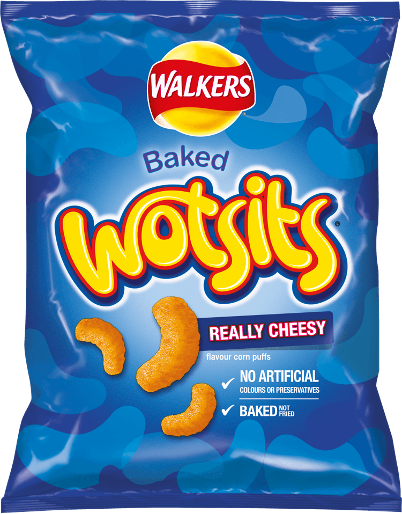“No added sugar.” “High protein.” “Gluten free.”
Why are more and more food packaging adorned with such tantalising words? Even Walkers’ Wotsits, corn puffs covered in bright orange cheesy dust, claim to contain “no artificial colours or preservatives”. These healthy-feeling words are there for a purpose: they work!

As humans, we conceptualise our world using mental shortcuts to make quicker, more efficient decisions. One mental shortcut that we adopt when presented with food options relates to the health halo effect. This refers to the act of mistakenly overestimating the overall healthfulness of a product based on attributes of a single claim (e.g., “low sugar”), regardless of the product’s overall nutritional content and any negative attributes.
To illustrate the health halo effect, in one previous study, researchers found that when a snack item displayed a claim for vitamin fortification, participants were:
1) less likely to look for nutrition information on the Nutrition Facts label

2) more likely to select the product for purchase
3) more likely to perceive the product as healthier
4) less likely to correctly choose the healthier product
The health halo effect also extends to fast food restaurants. Consumers have been found to underestimate the caloric content of main dishes and to select higher calorie side dishes, desserts and drinks when fast food restaurants claim to be healthy (e.g., Subway) compared to when they do not (e.g., McDonald’s).
As a society, we are becoming increasingly health-conscious. More consumers are seeking food and beverage brands that promote a healthy lifestyle. Consumers have also changed how they select their choices with a new yearning for reading labels and understanding what ingredients are in their products. Indeed, recent changes in policy have meant that all large businesses that serve food need to provide calorie information on their menu.
Thanks to the changing health values of consumers, this has given ammunition for food businesses to capitalise on the health halo effect.
From the consumers’ perspective, this can be concerning. The health halo effect may misleadingly encourage individuals to consume more than otherwise as they misperceive the product as healthier than it is, therefore they believe it is more acceptable to consume a higher amount. Consumers may also be making poorer health decisions as they are distracted by the salient claims and disregard the item’s overall nutritional content. Further, consumers may be unintentionally spending more as items featuring these claims are sometimes more expensive.
Given the concerning outcomes of the health halo effect, here are some tips your business may consider to reduce this.
1. Be transparent and honest.
Where a claim is featured on the packaging, it may be helpful to include a traffic light label to ensure that the nutrition information is clear and easily accessible.
2. Avoid vague language.
“Natural.” “Light.” What do these words really mean?
3. Avoid irrelevant claims.
If the item is a fruit salad (a medley of mixed fruit), is there any need to display “vegan”on the packaging when it is so obvious?
With these tips, a business can benefit by increasing consumers’ trust and positively improving brand perception.
Conclusion
In a ceaselessly extending health-conscious society, more consumers want to know what they are eating.
Though many food companies may not purposefully intend to deceive consumers and instead are trying to nudge them to make healthier choices, given our knowledge of the health halo effect, it is important for businesses to acknowledge and appreciate how the design of products can influence consumers’ interpretations and perceptions.
---
References
- Bhaduri, G., & Ha-Brookshire, J. E. (2011). Do transparent business practices pay? Exploration of transparency and consumer purchase intention. Clothing and Textiles Research Journal, 29(2), 135-149.
- Chandon, P., & Wansink, B. (2007). The biasing health halos of fast-food restaurant health claims: lower calorie estimates and higher side-dish consumption intentions. Journal of Consumer Research, 34(3), 301-314.
- Kaur, A., Scarborough, P., & Rayner, M. (2017). A systematic review, and meta-analyses, of the impact of health-related claims on dietary choices. The International Journal of Behavioral Nutrition and Physical Activity, 14(1). https://doi.org/10.1186/S12966-017-0548-1
- Verrill, L., Wood, D., Cates, S., Lando, A., & Zhang, Y. (2017). Vitamin-fortified snack food may lead consumers to make poor dietary decisions. Journal of the Academy of Nutrition and Dietetics, 117(3), 376-385.